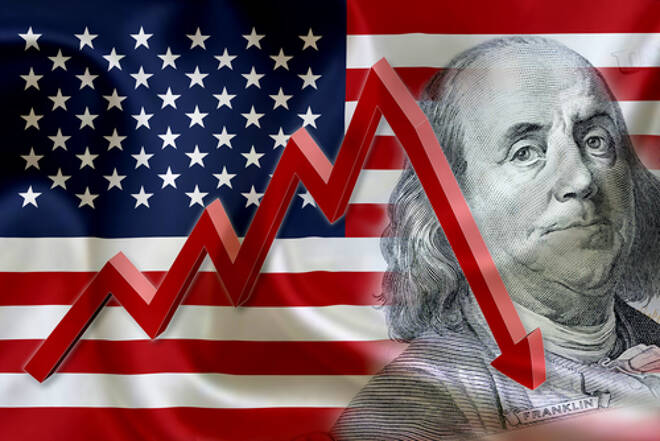Advertisement
Advertisement
U.S. Dollar Sunk by Wave of Buying in Aussie, Euro
By:
The U.S. Dollar hit its lowest level against a basket of currencies since August 2016 last week as a boatload of negative factors piled up against the
The U.S. Dollar hit its lowest level against a basket of currencies since August 2016 last week as a boatload of negative factors piled up against the Greenback, causing investors to lose confidence in the currency.
September U.S. Dollar Index futures finished the week at 93.679, down 1.251 or -1.32%.
The dollar was under pressure at the start of the week because dovish comments from Fed Chair Janet Yellen and disappointing consumer inflation and retail sales the previous week lowered the chances of a third Fed rate hike later in the year.
Last week’s selling pressure came in waves. The first wave of selling was fueled by a steep rally in the Australian Dollar that was caused by hawkish comments from the Reserve Bank of Australia (RBA). The second wave of selling was attributed to hawkish comments from European Central Bank (ECB) President Mario Draghi, which drove the Euro to a multi-year high.
Australian Dollar
The Australian Dollar rose sharply last week after the minutes of the RBA’s July 4 meeting, released on July 18, showed the central bank now estimates the “neutral” official cash rate to be 3.5 percent – a full 200 basis points above where the cash rate is now.
The AUD/USD closed at .7913, up 0.0087 or 1.11%.
Investors interpreted the inclusion of the comment to mean the RBA is now “hawkish”, as it is highly unusual for it to discuss the “neutral” rate at a monetary policy meeting. This interpretation was the catalyst for a massive rally.
However, on Friday, RBA deputy governor Guy Debelle tried to convince hawkish investors that they had misinterpreted the central bank’s move. Speaking at a business lunch in Adelaide, Debelle said: “No significance should be read into the fact the neutral rate was discussed at this particular meeting.”
He also said, “The policy rates in both the U.S. and Canada still remain below that in Australia.” He further added, “Ultimately, in Australia, as is the case elsewhere, policy rates are set at the level assessed to be appropriate to achieve the domestic policy objectives.”
New Zealand Dollar
The New Zealand Dollar recovered from early weakness to post a strong gain for the week. Traders were disappointed by weaker-than-expected quarterly Consumer Inflation data on July 18, but buyers quickly came in after the release of the minutes of the RBA monetary policy meeting.
The NZD/USD settled at .7454, up 0.0108 or +1.47%.
Since there was no major news from New Zealand to fuel the rally, it was attributed to speculation the Reserve Bank of New Zealand would follow the steps of the Reserve Bank of Australia and lower its “neutral” official cash rate, thereby, putting it in a position to raise interest rates sooner than expected.
About the Author
James Hyerczykauthor
James Hyerczyk is a U.S. based seasoned technical analyst and educator with over 40 years of experience in market analysis and trading, specializing in chart patterns and price movement. He is the author of two books on technical analysis and has a background in both futures and stock markets.
Advertisement
